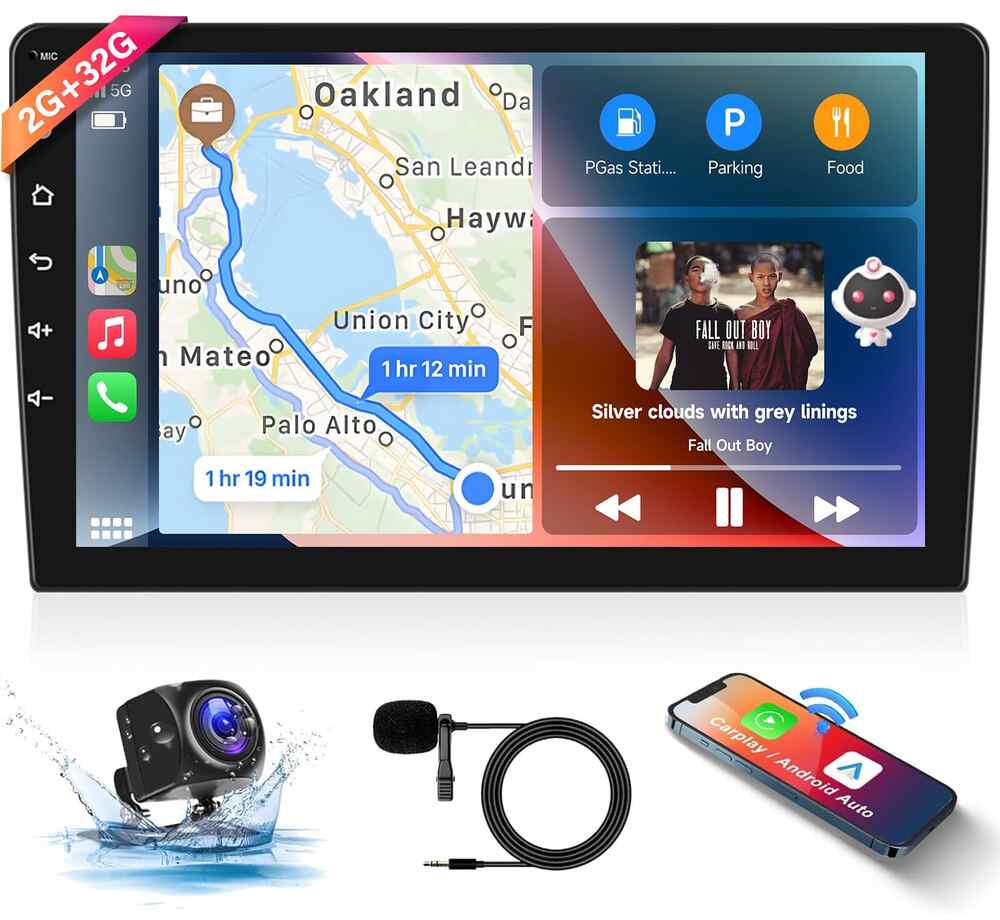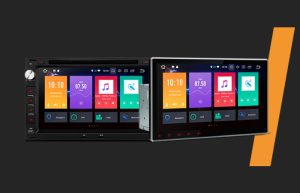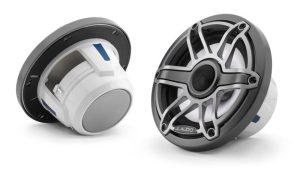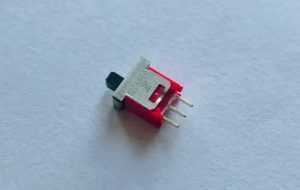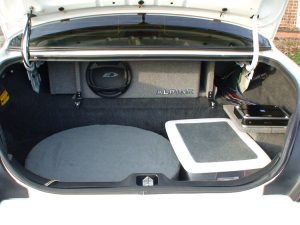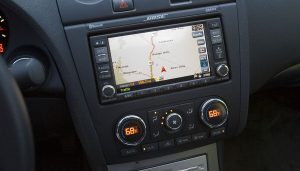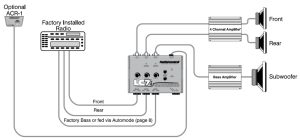Car stereos have evolved far beyond simple radio tuners. Today, they blend cutting-edge technology with seamless connectivity, transforming your driving experience. A car stereo with Bluetooth and navigation delivers hands-free calling, wireless music streaming, and precise GPS guidance. This guide dives into the best options for 2025, offering insights into features, benefits, and top picks. Whether you’re a tech enthusiast or a daily commuter, you’ll find the perfect system to elevate your ride.
Contents
- Why Choose a Car Stereo with Bluetooth and Navigation?
- Key Features to Look for in a Car Stereo
- Top Car Stereos with Bluetooth and Navigation for 2025
- Benefits of Upgrading Your Car Stereo
- How to Install a Car Stereo
- Tips for Choosing the Right Car Stereo
- Common Questions About Car Stereos with Bluetooth and Navigation
- Conclusion
Modern car stereos combine entertainment, safety, and convenience. Bluetooth ensures you stay connected without taking your hands off the wheel. Navigation systems guide you through unfamiliar routes with real-time updates. Together, these features create a safer, more enjoyable drive.
Bluetooth lets you stream music from your smartphone, answer calls, and even access voice assistants like Siri or Google Assistant. Navigation systems, meanwhile, offer turn-by-turn directions, traffic alerts, and points of interest. Many units integrate with Apple CarPlay and Android Auto, syncing your phone’s apps for a seamless experience.
Investing in a stereo with both features saves space and reduces clutter. Instead of separate devices, you get an all-in-one solution. Plus, these systems often include touchscreens, voice controls, and compatibility with backup cameras, enhancing functionality.
Key Features to Look for in a Car Stereo
Before choosing a car stereo, consider the features that matter most. Here’s a breakdown of what to prioritize:
1. Bluetooth Connectivity
Bluetooth should be reliable and easy to pair. Look for systems with Bluetooth 5.0 or higher for faster connections and better range. Dual-phone pairing is a bonus, letting two devices connect simultaneously. Check for hands-free calling and audio streaming capabilities.
2. Navigation System
Built-in GPS navigation is a must. Top models include real-time traffic updates, lane guidance, and offline maps. Some stereos sync with apps like Google Maps or Waze via Apple CarPlay or Android Auto, offering flexibility.
3. Touchscreen Display
A clear, responsive touchscreen makes navigation and control intuitive. Aim for at least a 6.8-inch display with high resolution. Capacitive screens are more responsive than resistive ones. Anti-glare coatings improve visibility in sunlight.
4. Smartphone Integration
Apple CarPlay and Android Auto are game-changers. They mirror your phone’s interface, letting you access apps, messages, and music. Wireless versions eliminate the need for cables, keeping your dashboard tidy.
5. Audio Quality
Great sound matters. Look for stereos with built-in amplifiers, customizable equalizers, and support for high-resolution audio formats. Compatibility with subwoofers and external amps is ideal for audiophiles.
6. Additional Features
- Voice Controls: Activate commands with Siri, Google Assistant, or Alexa.
- Backup Camera Support: Enhances safety when reversing.
- USB and AUX Inputs: Provide wired connectivity options.
- Expandability: Ports for adding satellite radio or DVD players.
Here are the best car stereos combining Bluetooth, navigation, and modern features. Each pick balances performance, usability, and value.
1. Pioneer AVH-W4500NEX
Pioneer leads the pack with the AVH-W4500NEX. This double-DIN unit boasts a 7-inch touchscreen, wireless Apple CarPlay, and Android Auto. Its built-in navigation, powered by iGo Primo, delivers accurate routing and offline maps. Bluetooth 5.0 ensures stable connections for calls and streaming.
The stereo shines with audio customization. Its 13-band equalizer and time alignment create immersive sound. It supports FLAC files and integrates with SiriusXM for satellite radio. A USB port and HDMI input add versatility. However, the interface can feel slightly dated compared to newer models.
Pros:
- Wireless smartphone integration
- Robust navigation system
- Excellent audio tuning
Cons:
- Interface isn’t the sleekest
- Pricey for some budgets
2. Kenwood Excelon DNX997XR
Kenwood’s DNX997XR is a premium choice. Its 6.8-inch HD touchscreen is crisp and responsive. Garmin navigation powers the GPS, offering 3D maps, traffic updates, and voice-activated directions. Bluetooth supports dual-phone pairing and high-quality audio streaming.
This unit excels in connectivity. It offers wireless Apple CarPlay, Android Auto, and Miracast for screen mirroring. Audiophiles will love the 13-band equalizer and digital sound processor. The system also supports dash cams and multiple camera inputs, boosting safety.
Pros:
- Top-tier Garmin navigation
- Wireless connectivity options
- Superior sound quality
Cons:
- High price point
- Complex setup for beginners
3. Alpine iLX-W650
For budget-conscious buyers, the Alpine iLX-W650 delivers. This 7-inch double-DIN stereo features a shallow chassis for easy installation. It supports Apple CarPlay and Android Auto, though wired connections are required. Bluetooth is reliable for calls and music.
Navigation relies on smartphone apps like Google Maps, as there’s no built-in GPS. The sound quality impresses, with a 9-band equalizer and Bass Engine SQ technology. Expandability is a highlight, with ports for amps, subwoofers, and cameras.
Pros:
- Affordable price
- Compact design
- Solid audio performance
Cons:
- No built-in navigation
- Wired smartphone connections
4. Sony XAV-AX8100
Sony’s XAV-AX8100 stands out with its 8.95-inch floating touchscreen. The large display makes navigation and app access effortless. It includes Apple CarPlay, Android Auto, and WebLink for app mirroring. Bluetooth 5.0 ensures smooth pairing.
While navigation depends on smartphone apps, the stereo’s interface is intuitive. Audio features include a 10-band equalizer and Dynamic Stage Organizer for immersive sound. Its single-DIN chassis fits most vehicles, and the adjustable screen angle reduces glare.
Pros:
- Massive, adjustable touchscreen
- Strong audio features
- Easy installation
Cons:
- No built-in GPS
- Price reflects premium display
5. JVC KW-Z1000W
The JVC KW-Z1000W offers a 10.1-inch HD touchscreen, one of the largest available. It supports wireless Apple CarPlay, Android Auto, and USB mirroring. Bluetooth handles dual-phone connections and high-resolution audio streaming.
Navigation relies on smartphone apps, but the oversized display makes maps easy to read. The stereo includes a 13-band equalizer, digital time alignment, and support for hi-res audio. Its floating design fits single- and double-DIN setups.
Pros:
- Huge, vibrant display
- Wireless connectivity
- Customizable sound
Cons:
- No built-in navigation
- Bulky design for some dashboards
Benefits of Upgrading Your Car Stereo
Installing a Bluetooth and navigation stereo transforms your vehicle. Here’s why it’s worth the upgrade:
- Enhanced Safety: Hands-free calling and voice-activated navigation reduce distractions. Backup camera support improves visibility.
- Improved Convenience: Wireless streaming and smartphone integration keep you connected. GPS eliminates the need for separate devices.
- Better Audio Experience: Advanced equalizers and amplifiers deliver crystal-clear sound, rivaling home audio systems.
- Increased Vehicle Value: Modern stereos appeal to buyers, boosting resale potential.
How to Install a Car Stereo
Installing a car stereo is manageable with the right tools and steps. Here’s a quick guide:
- Gather Tools: You’ll need a screwdriver, wire stripper, crimping tool, and a wiring harness adapter.
- Disconnect the Battery: Prevent electrical issues by disconnecting the negative battery terminal.
- Remove the Old Stereo: Unscrew the dashboard panel and disconnect the wiring harness and antenna.
- Connect the New Stereo: Match the wiring harness to the new unit. Use crimp connectors for secure connections.
- Test the System: Reconnect the battery and test Bluetooth, navigation, and audio.
- Secure the Stereo: Mount the unit in the dashboard and reassemble the panel.
For complex setups, consider professional installation to ensure compatibility and safety.
Tips for Choosing the Right Car Stereo
Selecting the perfect stereo depends on your needs and vehicle. Keep these tips in mind:
- Check Vehicle Compatibility: Confirm the stereo fits your car’s DIN size (single or double).
- Set a Budget: Prices range from $100 to over $1,000. Balance features with affordability.
- Prioritize Must-Have Features: Decide if built-in GPS or wireless connectivity is essential.
- Read Reviews: Customer feedback reveals real-world performance and reliability.
- Consider Future Upgrades: Choose a system with ports for cameras, amps, or satellite radio.
Do all car stereos with Bluetooth support hands-free calling?
Most do, but check for microphone quality and noise cancellation. Top models include external mics for clearer calls.
Can I use navigation without an internet connection?
Stereos with built-in GPS, like the Pioneer AVH-W4500NEX, offer offline maps. App-based navigation (Google Maps, Waze) requires data.
Are wireless Apple CarPlay and Android Auto worth it?
Yes, they reduce cable clutter and simplify connections. However, wired options are more affordable.
How do I improve audio quality?
Pair the stereo with quality speakers, add a subwoofer, and use the equalizer to fine-tune sound.
Conclusion
A car stereo with Bluetooth and navigation is a game-changer for any driver. These systems blend connectivity, safety, and entertainment, making every trip more enjoyable. From the feature-packed Pioneer AVH-W4500NEX to the budget-friendly Alpine iLX-W650, there’s an option for every need. Focus on key features like touchscreen quality, smartphone integration, and audio performance. With the right stereo, you’ll navigate roads confidently and enjoy your favorite tunes in style. Upgrade your ride today and experience the difference.
